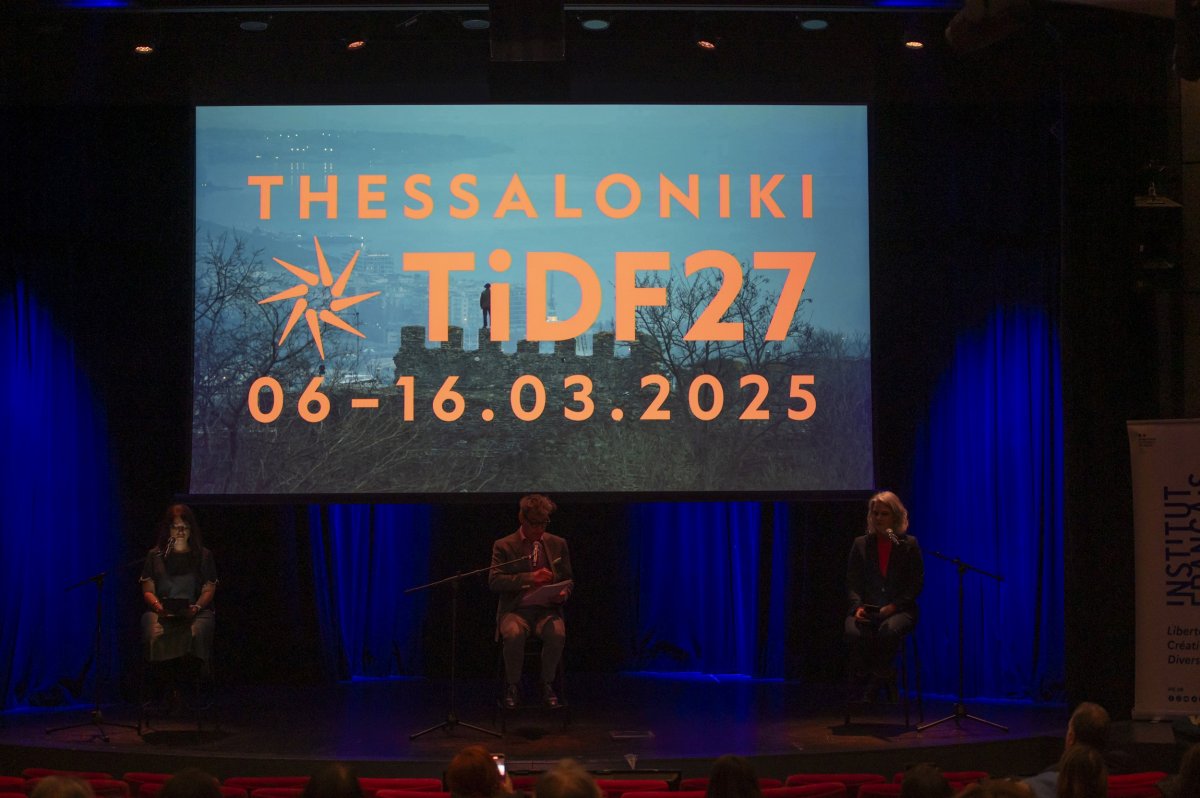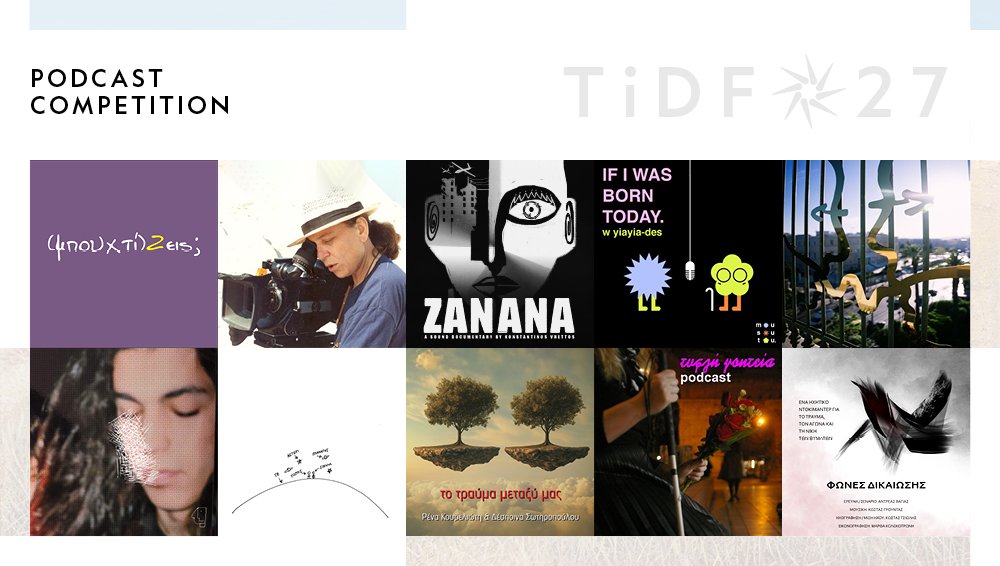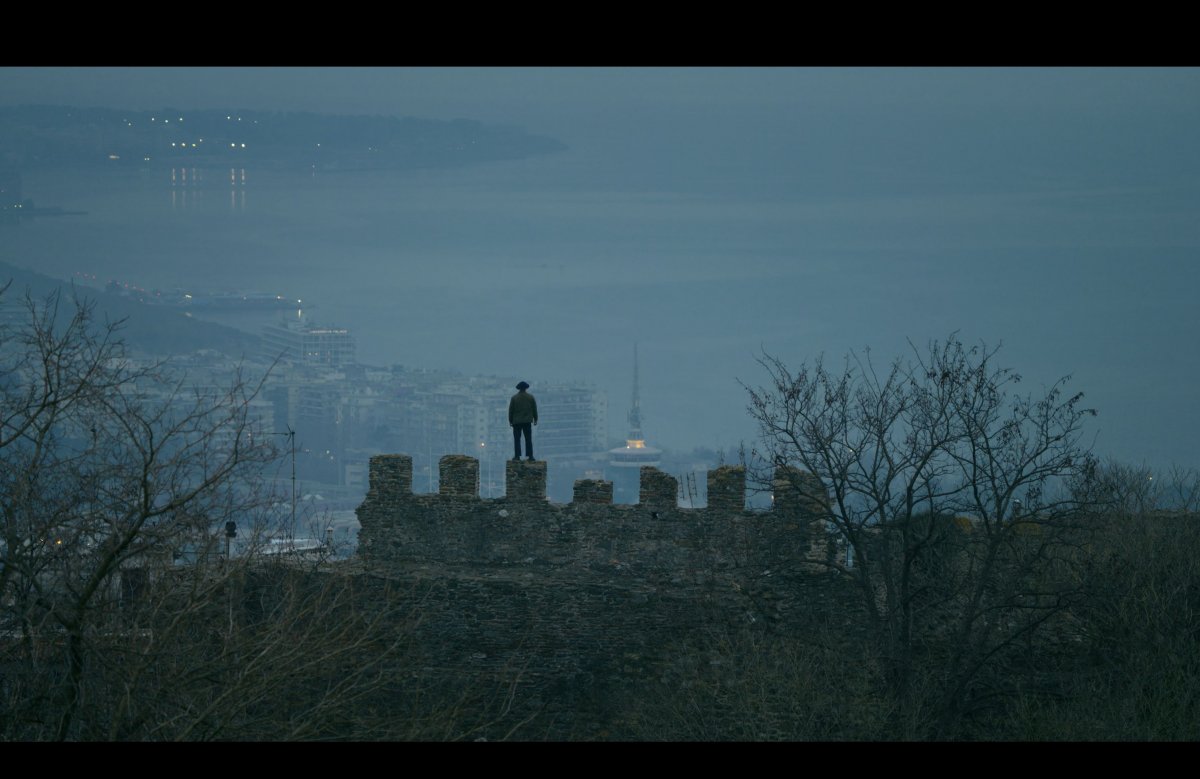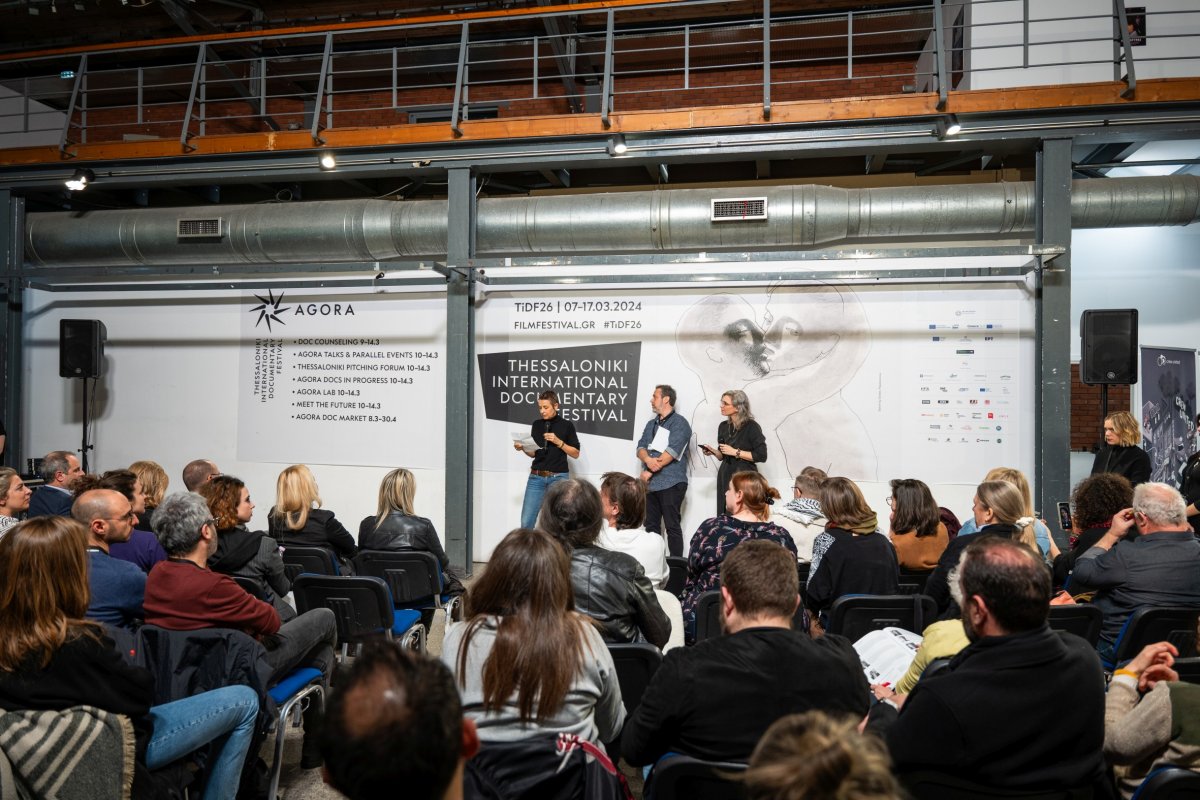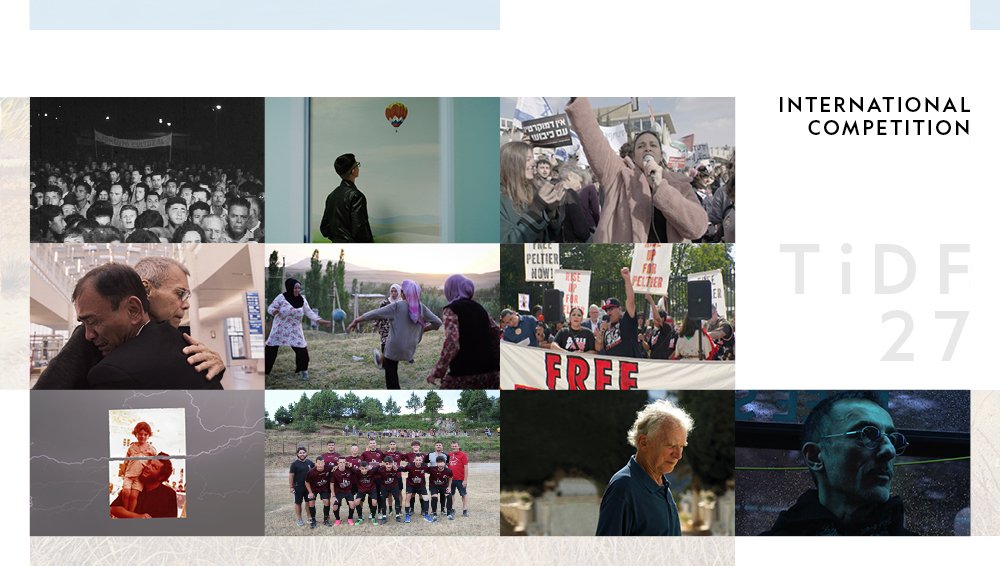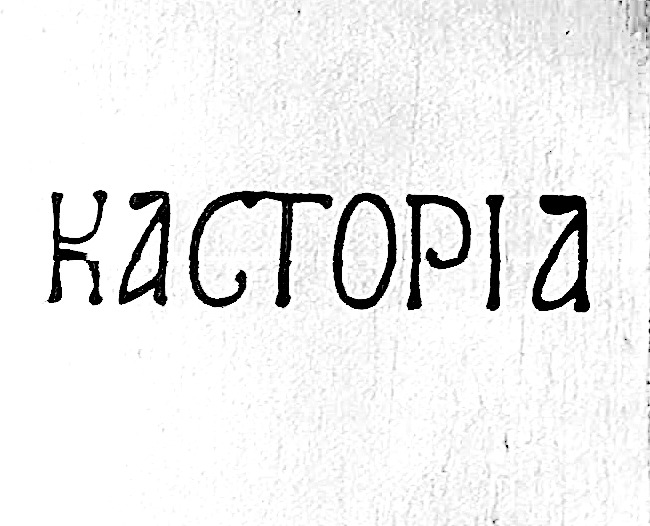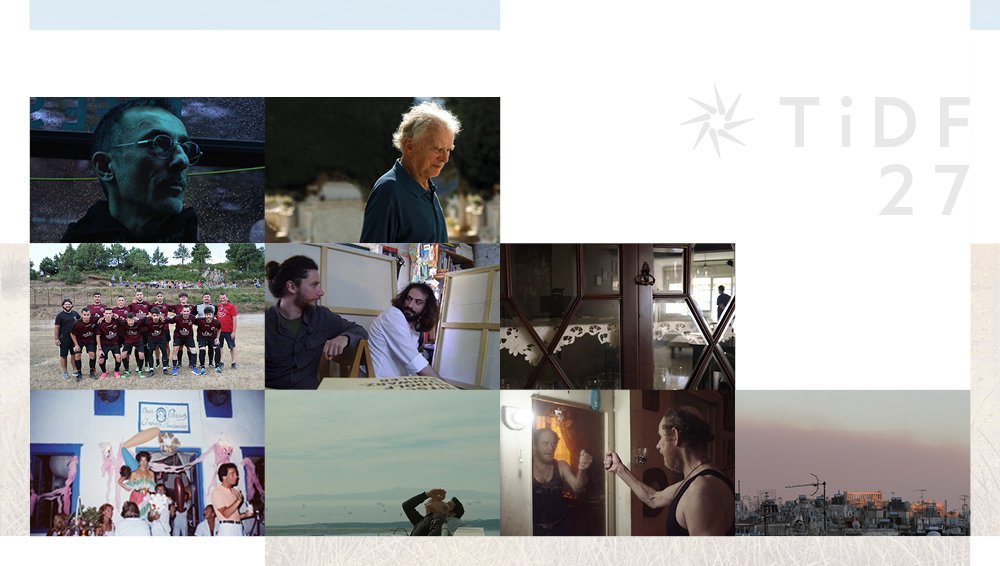Director, producer and MEDIA program representative Patrice Vivancos gave an interesting lecture on Friday, March 22, 2013 at the Pavlos Zannas theater, in the context of the 15th Thessaloniki Documentary Festival.
Vivancos offered valuable practical advice to the audience, which consisted mainly of directors and producers. He gave a general presentation on potential financing sources and revealed the secrets of a successful financing application. He also talked about alternative sources of funding and the process of finding buyers for documentaries.
In his initial remarks, Vivancos talked about the importance of film duration. “For TV programming executives, duration is crucial, as they have to fit the film in a very specific TV schedule, which is divided into hourly zones and includes advertising time. The most usual format is the 56-minute film. Other popular formats are the 26-minute, 13-minute and, increasingly, 7-minute film. Documentaries that run longer than 60 minutes are more fit for cinemas and the festival circuit. Producers should still make a second, 52-minute version for television”.
On the matter of private funding, he said that in 2013 the most important source is television. As for public financing, he said that “since the 1960s, when cinema was still a profitable industry, there has been a dramatic decline in revenue. Box office revenue has shrunk all over Europe, most notably in Italy. France was the first country to introduce support mechanisms for the more vulnerable cinema genres, which include the documentary and short films. In the 1970s, even commercial cinema suffered losses, so most countries have adopted policies that support their film industries”.
Vivancos then presented the MEDIA and Eurimages initiatives, which are addressed to European filmmakers: “Thirteen countries participate in the MEDIA program, which was established twenty years ago, to support the production of films in countries which did not have their own national cinema centers. Interested parties can apply for a maximum funding of 60,000 euro to develop their film. The application should include a 10-20 page presentation of the idea, preferably in English. Applicants are informed about the fate of their application after 5 months. On average, 20% of applications are successful. The Eurimages program is open to co-productions that have already found a buyer. The selection is made based on both the merits of the film and the institutions which have bought the rights”.
Offering practical advice on the application process, Vivancos said: “You should carefully examine previous projects financed by the institution you are applying to. This will allow you to understand what each institution stands for and is looking for in a film. It is also important to try and find co-producers, especially from other countries; not necessarily to find additional funds, but because this is a sign that a third party is also interested in your idea. A foreign co-producer also expands your distribution options. Another important point is to include in the application images of either your characters or of the sites where you plan to film. Needless to say, it helps if your application is well written and in proper English”.
On the issue of TV distribution, Mr. Vivancos made the following distinctions: “There are three types: co-production, selling the film before it is complete and the traditional sale after the film is ready. In the first case, the TV station provides 100% of the funding, in the second case 50% and in the third case 25%. In the case of a co-production, the filmmakers and stations also share part of the profits. When you are dealing with a co-production, you should act more like a lawyer, rather than a producer. Make sure you fully understand the terms of the agreement. Co-productions are not very frequent, but it is important to try to sell your film before starting filming. I know this is a time-consuming and complex process, but if you are successful, you will have more funds available when you actually need them more”.
Vivancos talked at length about the role of sales agents. “Their role is very important - they know the rules of the market. Of course they also get a big chunk (20-40%) of the profits, but I can tell you from own experience that being a polyglot did not help me one bit to sell a single film myself. Sales agents have film catalogues that make life easier for potential buyers, and are less sentimentally attached to the films compared to the filmmakers. It is best to contact a sales agent three months before filming starts”.
Mr. Vivancos then talked about alternative sources of revenue, like VOD platforms and crowd funding: “A MEDIA study showed that there are only three profitable platforms in Europe. Nonetheless, they can serve as a potential source of audience. Your reward will not be monetary, but you can build your name - or even become famous - and you can capitalize on that for your next project... As for crowd funding, it can work if the film focuses on a crucial issue or the filmmaker is well known in his own country. Commercial documentaries dealing with issues like the environment or nature have been trying lately to tap crowd funding, even though they do not need this additional source of financing. I am not very optimistic about crowd funding, I insist that television remains the most important source of financing”.
In his closing remarks, Mr. Vivancos said: “I believe that the first priority is to fight for legislation supporting independent productions where there is none. One should always remember that the documentary is one of the most vulnerable branches of the audiovisual business. Whenever a blockbuster film takes audiences by storm, fiction films increase their share of the pie”. He also stressed the importance of a vibrant cinema scene, with many theaters. “The US cinema is so dominant because of its huge audience. The average American goes to the movies twice as many times compared to his French counterpart, while the average Frenchman goes to the cinema twice as much as the Greek filmgoer. This is directly related to the number of theaters. In the US, there is one movie theater per 7,000 people, in France one for every 12,000, while in Romania the numbers are one movie theater for every 20,000 people. Romanian filmmaker Cristian Mungiu once told me that more people had seen his films abroad than in Romania. The number of movie theaters is therefore very important”.




